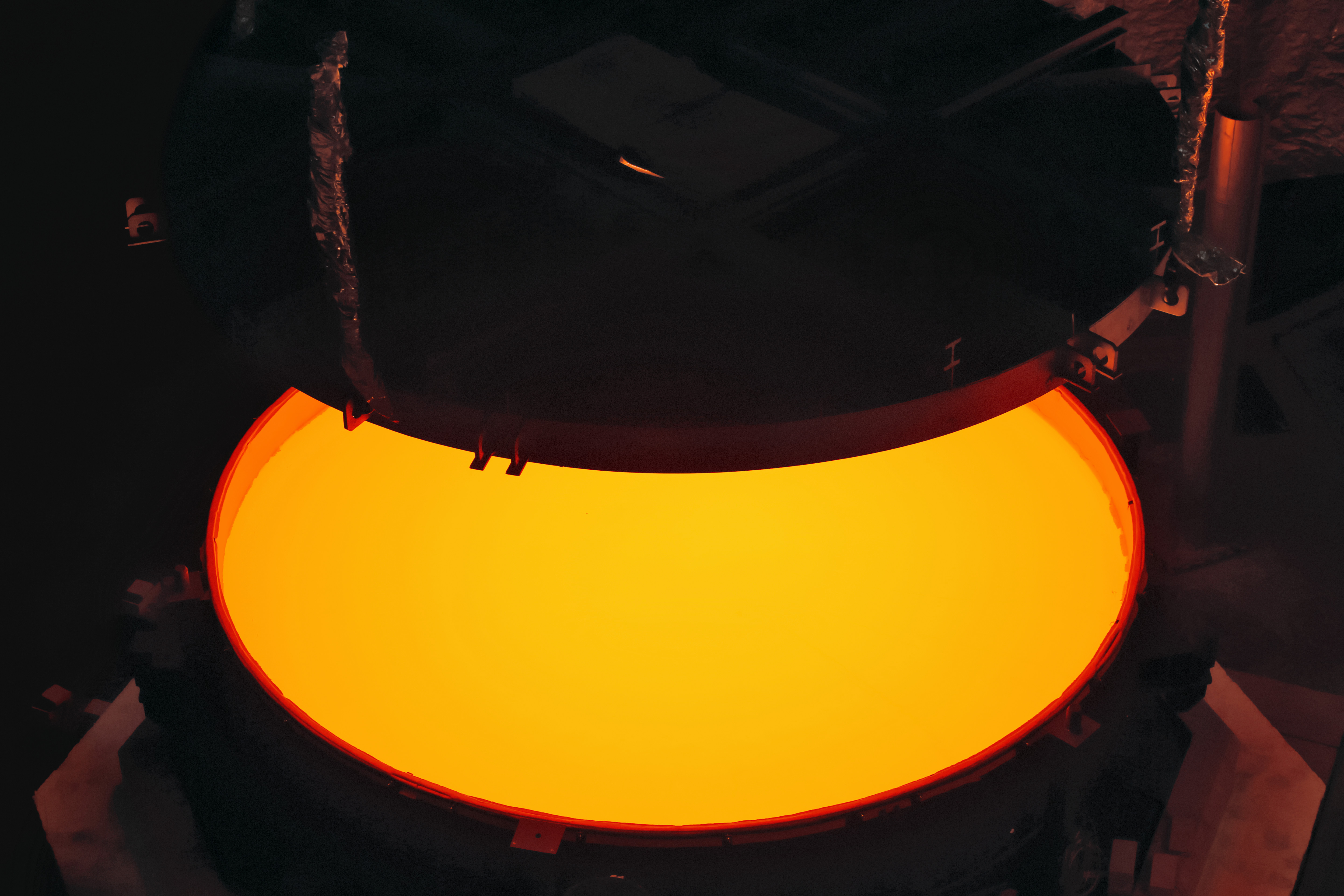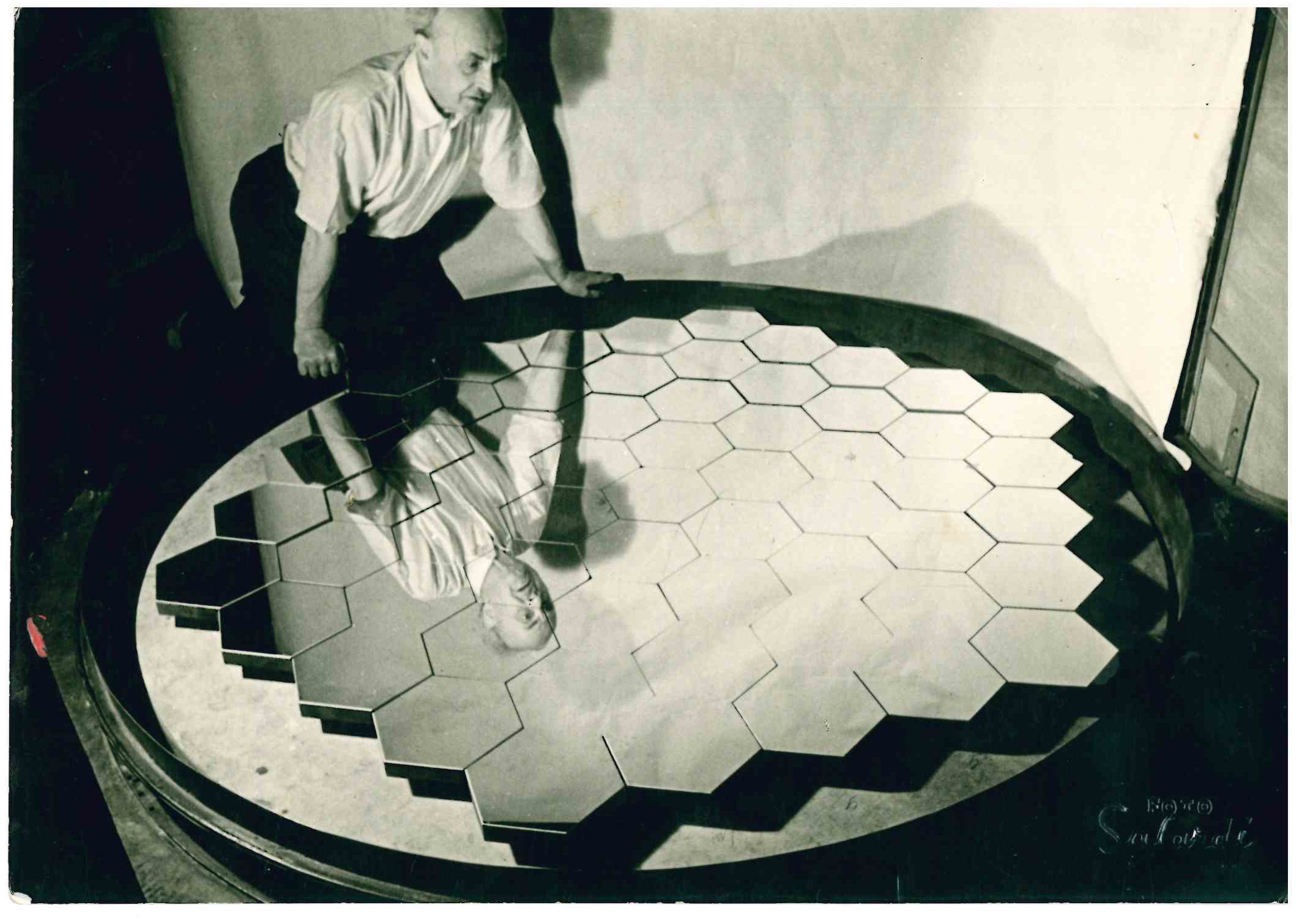|
Sitall
Sitall (also known as Sitall CO-115M or Astrositall) is a crystalline glass-ceramic with ultra-low coefficient of thermal expansion (CTE). It was originally manufactured in the former Soviet Union and was used in the making of primary mirrors for the Russian Maksutov telescopes, but since dissolution has diminished in quality. It has a CTE of only 0 ± 1.5 °C−1 in the temperature range −60 to 60 °C, placing it in a small group of transparent materials with low CTE such as Vycor, Zerodur, CerVit and fused quartz. Materials of low coefficient of thermal expansion are critical in the manufacture of optical elements for telescopes. In segmented mirror telescopes, it is desirable to have this coefficient as near zero as possible, and to have a high degree of homogeneity in the material. The Southern African Large Telescope (SALT) selected Sitall for the manufacture of its 91 primary mirror segments by Lytkarino Optical Glass Plant. The choice arose out of incr ... [...More Info...] [...Related Items...] OR: [Wikipedia] [Google] [Baidu] |
Coefficient Of Thermal Expansion
Thermal expansion is the tendency of matter to change its shape A shape or figure is a graphics, graphical representation of an object or its external boundary, outline, or external Surface (mathematics), surface, as opposed to other properties such as color, Surface texture, texture, or material type. A pl ..., area, volume, and density in response to a change in temperature, usually not including phase transitions. Temperature is a monotonic function of the average molecular kinetic energy of a substance. When a substance is heated, molecules begin to vibrate and move more, usually creating more distance between themselves. Substances which contract with increasing temperature are unusual, and only occur within limited temperature ranges (see examples below). The relative expansion (also called strain (mechanics), strain) divided by the change in temperature is called the material's coefficient of linear thermal expansion and generally varies with temperature. As energy ... [...More Info...] [...Related Items...] OR: [Wikipedia] [Google] [Baidu] |
Glass-ceramic
Glass-ceramics are polycrystalline materials produced through controlled crystallization of base glass, producing a fine uniform dispersion of crystals throughout the bulk material. Crystallization is accomplished by subjecting suitable glasses to a carefully regulated heat treatment schedule, resulting in the nucleation and growth of crystal phases. In many cases, the crystallization process can proceed to near completion, but in a small proportion of processes, the residual glass phase often remains. Glass-ceramic materials share many properties with both glasses and ceramics. Glass-ceramics have an amorphous phase and one or more crystalline phases and are produced by a so-called "controlled crystallization" in contrast to a spontaneous crystallization, which is usually not wanted in glass manufacturing. Glass-ceramics have the fabrication advantage of glass, as well as special properties of ceramics. When used for sealing, some glass-ceramics do not require brazing but can withs ... [...More Info...] [...Related Items...] OR: [Wikipedia] [Google] [Baidu] |
Zerodur
Zerodur (notation of the manufacturer: ZERODUR®), registered trademarkof Schott AG, is a lithium-aluminosilicate glass-ceramic produced by Schott AG since 1968. It has been used for a number of very large telescope mirrors including GTC, Keck I, Keck II, and SOFIA, as well as some smaller telescopes (such as the GREGOR Solar Telescope). With its very low coefficient of thermal expansion (CTE) it can be used to produce mirrors that retain acceptable figures in extremely cold environments such as deep space. Although it has advantages for applications requiring a coefficient of thermal expansion less than that of borosilicate glass, it remains very expensive as compared to borosilicate. The tight tolerance on CTE, ±0.007 K−1, allows for its use in high-precision applications. Applications # Optics # Microlithography # Measurement technology Properties Zerodur has both an amorphous (vitreous) component and a crystalline component. Its most important properties are: * Particul ... [...More Info...] [...Related Items...] OR: [Wikipedia] [Google] [Baidu] |
VLT Survey Telescope
The VLT Survey Telescope (VST) is a telescope located at ESO’s Paranal Observatory in the Atacama Desert of northern Chile. It is housed in an enclosure immediately adjacent to the four Very Large Telescope (VLT) Unit Telescopes on the summit of Cerro Paranal. The VST is a wide-field survey telescope with a field of view twice as broad as the full Moon. It is the largest telescope in the world designed to exclusively survey the sky in visible light. The VST program is a cooperation between the Osservatorio Astronomico di Capodimonte (OAC), Naples, Italy, and the European Southern Observatory (ESO) that began in 1997. The OAC is one of the institute members of Istituto Nazionale di AstroFisica (INAF), which created a separate institute for the coordination of both technological and scientific aspects of the project, named Centro VST a Napoli (VSTceN). VSTcen was founded and directed by Prof. Massimo Capaccioli of the VST project, and hosted at the OAC. ESO and VSTceN collaborat ... [...More Info...] [...Related Items...] OR: [Wikipedia] [Google] [Baidu] |
Southern African Large Telescope
The Southern African Large Telescope (SALT) is a 10-metre class optical telescope designed mainly for spectroscopy. It consists of 91 hexagonal mirror segments each with a 1-metre inscribed diameter, resulting in a total hexagonal mirror of 11.1 by 9.8 m. It is located close to the town of Sutherland in the semi-desert region of the Karoo, South Africa. It is a facility of the South African Astronomical Observatory, the national optical observatory of South Africa. SALT is the largest optical telescope in the southern hemisphere. It enables imaging, spectroscopic, and polarimetric analysis of the radiation from astronomical objects out of reach of northern hemisphere telescopes. It is closely based on the Hobby-Eberly Telescope (HET) at McDonald Observatory, with some changes in its design, especially to the spherical aberration corrector. The main driver for these changes were desired improvements to the telescope's field of view. It shares the same fixed mirror altitude ... [...More Info...] [...Related Items...] OR: [Wikipedia] [Google] [Baidu] |
Maksutov Telescope
The Maksutov (also called a "Mak") is a catadioptric telescope design that combines a spherical mirror with a weakly negative meniscus lens in a design that takes advantage of all the surfaces being nearly "spherically symmetrical". The negative lens is usually full diameter and placed at the entrance pupil of the telescope (commonly called a "corrector plate" or "meniscus corrector shell"). The design corrects the problems of off-axis aberrations such as coma found in reflecting telescopes while also correcting chromatic aberration. It was patented in 1941 by Russian optician Dmitri Dmitrievich Maksutov. Maksutov based his design on the idea behind the Schmidt camera of using the spherical errors of a negative lens to correct the opposite errors in a spherical primary mirror. The design is most commonly seen in a Cassegrain variation, with an integrated secondary, that can use all-spherical elements, thereby simplifying fabrication. Maksutov telescopes have been sold on the ama ... [...More Info...] [...Related Items...] OR: [Wikipedia] [Google] [Baidu] |
Cer-Vit
Cer-vit is a family of glass-ceramic materials that were invented by Owens Illinois in the mid-1960s. Its principle ingredients are the oxides of lithium, aluminum and silicon. It is melted to form a glass which is then heat treated to nucleate and crystallize it into a material that is more than 90% microscopic crystals. Its formulation and heat treatment can be modified to produce a variety of material properties. One form is a material that is transparent and has a near zero thermal expansion. Its transparency is because the microscopic crystals are smaller than the wave length of light and are transparent, and its low thermal expansion is because they have a spodumene structure. This material (Cer-Vit C 101) was used to form large mirror blanks (158 inches in diameter) that were used in telescopes in several places, including South America, France and Australia. Owens Illinois ceased production of C101 in 1978. In addition, Cer-Vit materials were used to make stove tops, cook wa ... [...More Info...] [...Related Items...] OR: [Wikipedia] [Google] [Baidu] |
Fused Quartz
Fused quartz, fused silica or quartz glass is a glass consisting of almost pure silica (silicon dioxide, SiO2) in amorphous (non-crystalline) form. This differs from all other commercial glasses in which other ingredients are added which change the glasses' optical and physical properties, such as lowering the melt temperature. Fused quartz, therefore, has high working and melting temperatures, making it less desirable for most common applications. The terms fused quartz and fused silica are used interchangeably, but can refer to different manufacturing techniques, as noted below, resulting in different trace impurities. However fused quartz, being in the glassy state, has quite different physical properties compared to crystalline quartz. Due to its physical properties it finds specialty uses in semiconductor fabrication and laboratory equipment, for instance. Compared to other common glasses, the optical transmission of pure silica extends well into the ultraviolet and infra ... [...More Info...] [...Related Items...] OR: [Wikipedia] [Google] [Baidu] |
Segmented Mirror
A segmented mirror is an array of smaller mirrors designed to act as segments of a single large curved mirror. The segments can be either spherical or asymmetric (if they are part of a larger parabolic reflector). They are used as objectives for large reflecting telescopes. To function, all the mirror segments have to be polished to a precise shape and actively aligned by a computer-controlled active optics system using actuators built into the mirror support cell. The concept was pioneered by Guido Horn D'Arturo, who built the first working segmented mirror in 1952, after twenty years of research; It was later independently rediscovered and further developed under the leadership of Dr. Jerry Nelson at the Lawrence Berkeley National Laboratory and University of California during the 1980s, and since then all the necessaries technologies have spread worldwide to the point that essentially all future large optical telescopes plan to use segmented mirrors. Application There i ... [...More Info...] [...Related Items...] OR: [Wikipedia] [Google] [Baidu] |
Primary Mirror
A primary mirror (or primary) is the principal light-gathering surface (the objective) of a reflecting telescope. Description The primary mirror of a reflecting telescope is a spherical or parabolic shaped disks of polished reflective metal (speculum metal up to the mid 19th century), or in later telescopes, glass or other material coated with a reflective layer. One of the first known reflecting telescopes, Newton's reflector of 1668, used a 3.3 cm polished metal primary mirror. The next major change was to use silver on glass rather than metal, in the 19th century such was with the Crossley reflector. This was changed to vacuum deposited aluminum on glass, used on the 200-inch Hale telescope. Solid primary mirrors have to sustain their own weight and not deform under gravity, which limits the maximum size for a single piece primary mirror. Segmented mirror configurations are used to get around the size limitation on single primary mirrors. For example, the Giant Mag ... [...More Info...] [...Related Items...] OR: [Wikipedia] [Google] [Baidu] |
Lytkarino Optical Glass Plant
Lytkarino Optical Glass Plant (russian: Лыткаринский завод оптического стекла) is a company based in Lytkarino, Russia and established in 1934. It is part of the Shvabe Holding of the state-owned Rostec corporation. The Lytkarino Optical Glass Plant is a major producer of optical glass and precision optical instruments for the military as well as for the civilian market, producing night vision devices and glass laser optics. See also * Rubinar * BTA-6 The BTA-6 (russian: Большой Телескоп Альт-азимутальный, translit=Bolshoi Teleskop Alt-azimutalnyi, translation=Large Altazimuth Telescope) is a aperture optical telescope at the Special Astrophysical Observatory lo ... References External links Official website {{Russia-company-stub Manufacturing companies of Russia Companies based in Moscow Oblast Shvabe Holding Defence companies of the Soviet Union Manufacturing companies of the Soviet Union Ministry of ... [...More Info...] [...Related Items...] OR: [Wikipedia] [Google] [Baidu] |






